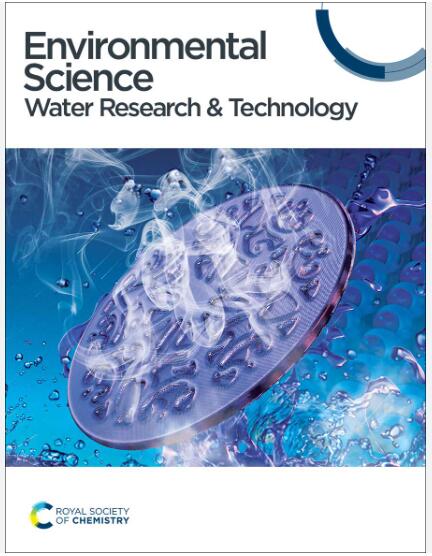LCFA Occurrence in Primary and Secondary Sewage Sludge Fractions
IF 3.1
4区 环境科学与生态学
Q3 ENGINEERING, ENVIRONMENTAL
引用次数: 0
Abstract
Sewage sludge produced in municipal wastewater treatment plants (WWTPs) is stabilized to produce methane/energy and a final stabilized biosolid suitable for land use using anaerobic digestion (AD) process. Fat, oil, and grease (FOG) matter present in the sewage sludge and their products, long chain fatty acids (LCFA), are not monitored qualitatively and quantitatively for their contribution or inhibition to methane production during the process. AD is designed and operated based on average volatile solid (VS) removal criteria. LCFA can be both present in the sewage sludge and produced as intermediate products during the hydrolysis of FOG. A 1.5-year monitoring of the primary and secondary sludge fractions was conducted and evaluated in a timely base in a municipal WWTP. According to the results, the most common and highest presence belonged to palmitate (C16:0) and total LCFA occurred up to 11963 and 927 mg/L in PS and SS, respectively. Common LCFA species were laurate, myristate, palmitate, stearate, oleate and elaidate. The level in the mixed sludge feed complied with the inhibitory threshold values neglecting the accumulation in the anaerobic digesters.LCFA在一次和二次污水污泥馏分中的分布
城市污水处理厂(WWTPs)产生的污水污泥通过厌氧消化(AD)过程稳定产生甲烷/能源和最终稳定的生物固体,适合土地利用。在污水污泥及其产物长链脂肪酸(LCFA)中存在的脂肪、油和油脂(FOG)物质在该过程中对甲烷产生的贡献或抑制作用没有进行定性和定量监测。AD是根据挥发性固体(VS)平均去除标准设计和运行的。LCFA既可以存在于污泥中,也可以在FOG水解过程中作为中间产物产生。对某城市污水处理厂进行了为期1.5年的一次和二次污泥组分监测,并及时进行了评价。结果表明,棕榈酸酯(C16:0)的含量最高,总LCFA在PS和SS中分别高达11963和927 mg/L。常见的LCFA品种有月桂酸盐、肉豆蔻酸盐、棕榈酸盐、硬脂酸盐、油酸盐和精炼酸盐。混合污泥饲料中的水平符合抑制阈值,忽略厌氧消化池中的积累。
本文章由计算机程序翻译,如有差异,请以英文原文为准。
求助全文
约1分钟内获得全文
求助全文
来源期刊

Environmental Science: Water Research & Technology
ENGINEERING, ENVIRONMENTALENVIRONMENTAL SC-ENVIRONMENTAL SCIENCES
CiteScore
8.60
自引率
4.00%
发文量
206
期刊介绍:
Environmental Science: Water Research & Technology seeks to showcase high quality research about fundamental science, innovative technologies, and management practices that promote sustainable water.
 求助内容:
求助内容: 应助结果提醒方式:
应助结果提醒方式:


